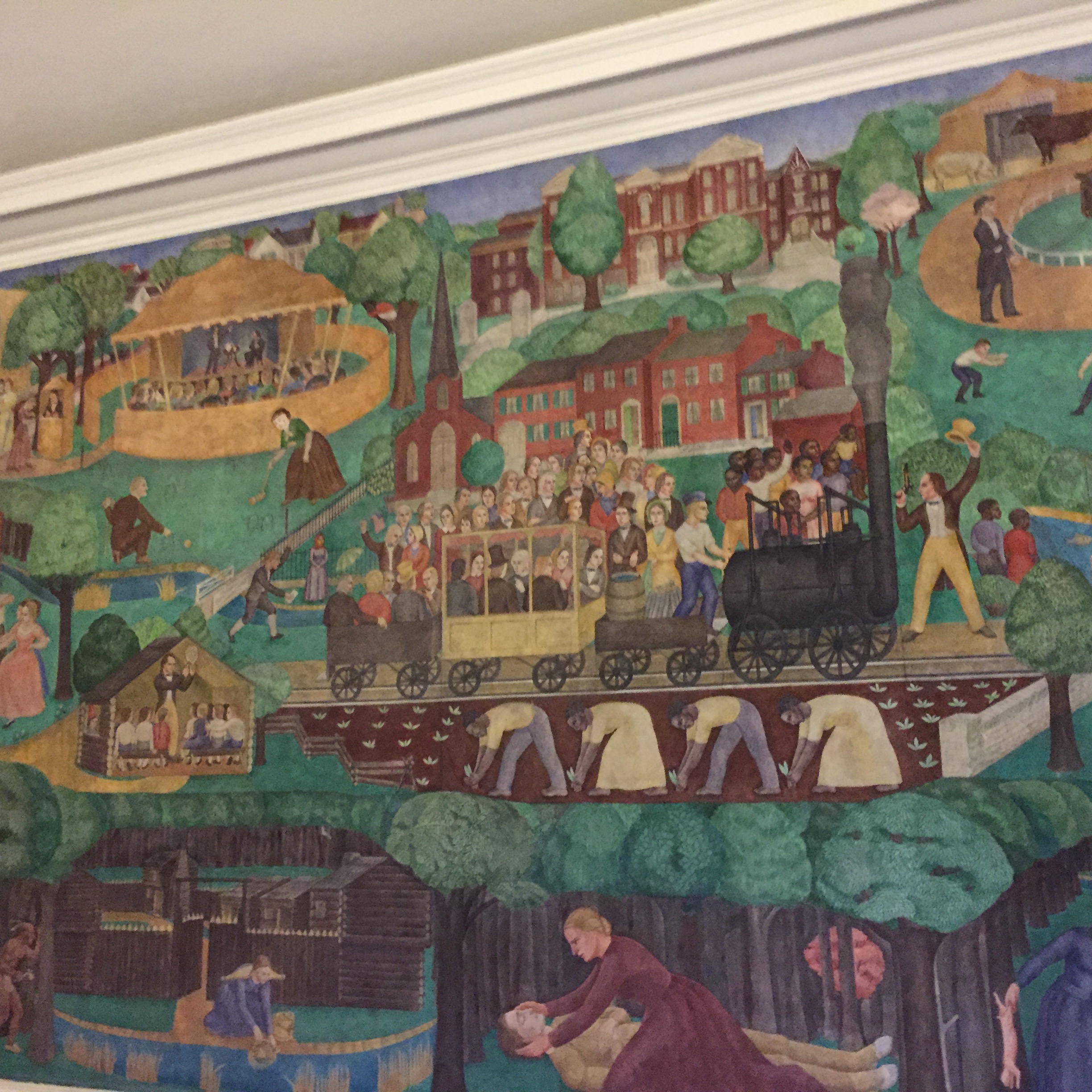You have /5 articles left.
Sign up for a free account or log in.
In 1934, Ann Rice O'Hanlon painted a fresco -- then the largest one ever painted by a woman -- in the University of Kentucky's Memorial Hall. Ever since, thousands of students have walked past it on their way to and from various events each semester. Some have been oblivious to the work, which depicts Kentucky's history, while others have admired it and considered it an outstanding example of the Depression-era Public Works of Art program, which paid for the fresco.

While moving the fresco to a more appropriate location will take time, Capilouto said in an online essay released by the university, Kentucky will cover up the 45-by-8-foot fresco for now and add a sign explaining why the mural is obscured.
Capilouto's decision comes at a time when many colleges are debating building names, statues and other ways that they honor individuals or institutions seen as praiseworthy by academic leaders in generations past, but that frustrate and anger many black and other minority students.
In explaining the decision, Capilouto tried to put the fresco's creation in context. He noted that the fresco "is considered by some to be one of the most important artworks of its kind in the commonwealth," and that it was a "product of the 1930s perspective of the artist and her times."
And the president described being moved by the black students he met with recently to discuss the mural. "One African-American student recently told me that each time he walks into class at Memorial Hall he looks at the black men and women toiling in tobacco fields and receives the terrible reminder that his ancestors were enslaved, subjugated by his fellow humans," Capilouto wrote. "Worse still, the mural provides a sanitized image of that history. The irony is that artistic talent actually painted over the stark reality of unimaginable brutality, pain and suffering."
Adding to the problem, he said, is that Memorial Hall is one of the university's "signature and busiest venues" and that "this is often the first exposure people have to our campus, our culture and our values."
He said that it is wrong to continue to let the mural be displayed as it has been. "In spite of the artist's admirable, finely honed skill that gave life to the mural, we cannot allow it to stand alone, unanswered by and unaccountable to the evolutionary trajectory of our human understanding and our human spirit," he wrote.
The black students who met with Capilouto could not be reached for this article.
But one of the students, Rashad Bigham, told The Lexington Herald-Leader: “I think the president has done a very good job voicing our concerns. This is a good first step toward creating a place where some people don’t have to be reminded about something as horrible as slavery.”




